- Administrator
- Albums and Singles
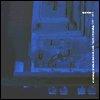 SubRosa continues to delve into the hidden history of electronic musicwith the fourth instalment in this series. This is the most accessiblevolume so far with less emphasis on pure noise, the compilers stickingmainly to less abrasive pieces and brooding electronic pieces from thelast seven decades.
SubRosa continues to delve into the hidden history of electronic musicwith the fourth instalment in this series. This is the most accessiblevolume so far with less emphasis on pure noise, the compilers stickingmainly to less abrasive pieces and brooding electronic pieces from thelast seven decades.
Sub Rosa
The first thing (and probably the most superficial thing) that I noticed about this volume is the lack of the big names that the series has seemed to sell itself on (previous volumes included Cage, Merzbow, Neubauten, Beefheart, Autechre and so on). Volume 4 focuses more on obscure and/or serious artists. Browsing through the tracklisting for the first time, there were few names I recognised (on further investigation, this volume is dedicated to the unknown and unrecognised pioneers). Anyway, time to move on to the music itself.
Most of the tracks across the two discs are rhythmic drones, many ofthem very relaxing, with only a small few "difficult" pieces. Some ofthe music could be seen as boring and predictable as the ideas exploredin it have been reused and improved in the years since these particulartracks were recorded. The majority still sound extremely fresh andsometimes frighteningly contemporary. The opening track by Halimel-Dabh, an Egyptian composer dabbling in musique concrête beforemusique concrête existed, has a haunting quality which astoundsme by being over sixty years old. This small piece of electronic magicis followed by the much duller “Pièce Électronique #3” by György Ligeti(of 2001: A Space Odyssey fame). No doubt it sounded otherworldly at the time but it is lacklustre both in the context of this compilation and in the context of his other works. At the end of the compilation is a beautiful piece by Olivier Messaiaen for the Ondes Martenot, similar in sound to a theremin, which pairs off perfectly with el-Dabh's piece. Both are early examples of using electronics to make sounds that sound far more contemporary than they are (Messaiaen's "Oraison" is from 1937).
Reich’s “Pendulum Music” is included here. I like it but Ulrich Krieger’s interpretation didn’t do much for me. However, like a lot of the music here, the random nature of pieces like “Pendulum Music” means that it’s very hard to enjoy every version of a particular piece. The very nature of noise is its randomness. It shouldn’t be either likeable or dislikeable; it should just be what it is. If it’s aesthetically appealing then that’s just a happy accident (I think there’s a distinction between a piece being aesthetically and conceptually appealing).
One band I’m delighted to hear on this compilation is Japan’s criminally obscure Les Rallizes Denudes. Personally I think they fall firmly in the realm of rock as opposed to noise (and definitely not electronic music). Granted they were a noisy band, “Fucked Up and Naked” demonstrates this, but the noise seemed more like a by product than an actual goal. In a similar way “River Blindness” by Andy Hawkins is an example of how noisy rock can be. Feedback and volume have always been standard issue in rock’s arsenal and Hawkins seems to be stockpiling both. These two tracks show how noise isn’t just a pastime for the avant garde composer. Of course they also demonstrate how you can over intellectualise rock and I feel that the compilers have slightly shot themselves in the foot.
The concept of the cut up in music is well worn at this stage. In this day of sampling and easy editing, it’s hard to think of it as an art form as opposed to a tool. Listening to some of the tracks on this album brings home how revolutionary cut ups once were. “Broken Music Composition” by Knizak shows how physical the act of cutting up was; Knizak would break up records and reassemble them in new combinations to make random compositions. It sounds like someone trying to tune in stations on an extremely unreliable radio. The Burroughs tape piece is not strictly a cut up but works on a similar principle. “Present Time Exercises” is a collage of radio and television recordings mashed together. It sounds hackneyed now as dozens of “edgy” artists have done the idea to death but it is still a fascinating window into Burroughs’ unique mind.
There is a lot of material contained here and most of it isfascinating or at the very least of some historical importance. Thereis little to no filler: the people at Sub Rosa have done a sterling jobof picking out nuggets. It is especially impressive consideringthe Anthology project now spans eight CDs. I am impressed to say the least by their continuing high standards.
samples:
- Halim el-Dabh, "Wire Recorder Piece"
- Les Rallizes Denudes, "Fucked Up and Naked"
- Olivier Messaiaen, "Oraison"
Read More
- Administrator
- Albums and Singles
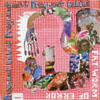 Fat Worm play quality organic post-Caroliner costume noise coming out of a state whereCaroliner won’t even play these days, Massachusetts(something about Puritan blood-rites on the land).
Fat Worm play quality organic post-Caroliner costume noise coming out of a state whereCaroliner won’t even play these days, Massachusetts(something about Puritan blood-rites on the land).
The band has been putting on some of the craziest shows I’veseen, not as much in the spastic energy dept. (though that’s not a problem) aswith a blatant and absurd unpredictability, something un-grotesquelycombinative and childish and uplifting without any sarcasm…lots of costumechanges and bizarre posturing that really isn’t because there’s no directingatmosphere or landscape or character behind it. It's just a beautiful, freewheelingcomedy-as-art, art-as-comedy routine lavished together through the holes in anever-growing, porous, neon sound sculpture.
Shambolic as any “filler” on a Thinking Fellers record and as high-stungand purposed as Zappa in his most-‘out’ stages, Fat Worm makes truly invitingskronk rock concrète, full of polyrhythmic toy machines, convincing fartsounds and guttural word games, everything suited-up neatly and snagged in aroom-size waveform with vaguely collectivized, pow-wow vibe, a communing musicbuilt on myths of unrecognizable phrases, screeching guitar punctuation, anddinner sounds of the damned.
This is NewOld-fashioned American experimental party music; I love it.
samples:
Read More
- Administrator
- Albums and Singles
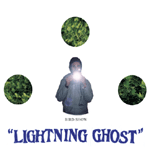 Ben Vida takes no time in showcasing just how his music has evolved since the release of Green Inferno. When "Field on Water" begins, the skipping rhythms and tightly structured melodies come as a pleasant shock and as evidence that even the most obscure musical techniques can facilitate a beauty anyone can appreciate.
Ben Vida takes no time in showcasing just how his music has evolved since the release of Green Inferno. When "Field on Water" begins, the skipping rhythms and tightly structured melodies come as a pleasant shock and as evidence that even the most obscure musical techniques can facilitate a beauty anyone can appreciate.
Kranky
Green Inferno was a thick, warm album that swelled and pulsed with all the life of a Florida summer. There were melodies, vocals, and rhythms congregating with swells and synthetic washes; the mixture of earthy textures and incorporeal suggestion was soothing, if just a little offbeat. Lightning Ghost begins with an emphasis on the phenomenal and tangible world, doing away with or deemphasizing the elysian connotations that covered Vida's previous work as Bird Show in the form of drone-like features. Vida's voice stands out on this record, having a more prominent position in the music, but the music itself has changed and many of these songs deserve to be called catchy, among other things. Ben works his magic on Lightning Ghost by emphasizing tribal grooves and simple rhythms, casting them as the gravity around which the rest of the album will flow. The material around that gravitational center is composed of many different sounds, not the least of which is a psychedelic continuity of beating guitars and melodic percussion. Nothing on Green Inferno sounds like this does, but the shift makes sense; there were hints that Vida was capable of something like this in everything he's done.
So the album is different, but that says nothing about how good it is. I said the songs were catchy and that's absolutely true. I want to listen to this album in my car just as much as I want to listen to it in a reclining chair with a nice pair of headphones. The rhythms cruise lazily, but with an insistent pulse and the guitars and keyboard parts interact and tangle together in some very appealing ways; the title track is an especially good example of Vida's tendency to mash all his instrumentation together. The album isn't soupy, but it's carefully arranged so that each sound compliments the next, furthering the organic qualities that the album already has. Vida's misty production also lends its hand in giving the record a naturalistic sound. As each song progresses it works its way deeper into my consciousness not just because it's got something like a hook here and there, but because it belongs there, fits there like it was missing from the start.
There may be some strange instrumentation here, but the music isultimately very approachable. Before, Ben might've alienated somepeople by abstaining from more conventional song structures andsticking to rather abstract work, but now he is welcoming thosestructures into his music and putting them to good use. They don'tdominate the album, but they add to the mystique of Vida's alreadythrobbing and shrouded music. I think this may earn Vida some new fansand I don't think it's too big of a stretch to imagine a record likethis being a gateway to stranger music for people who've never reallyexplored new and different styles. Ben Vida has created a sound all hisown, but kept much of the music familiar enough to be inviting.
samples:
Read More
- Administrator
- Albums and Singles
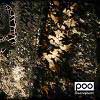 This is the debut album from the Slovakian duo Poo. With a name like Poo I thought that the album was going to be toilet humour in the style of Anal Cunt, something that might be worth listening to once but ultimately shallow. My preconceptions were nothing but preconceptions, Poo make serious and highly rewarding music.
This is the debut album from the Slovakian duo Poo. With a name like Poo I thought that the album was going to be toilet humour in the style of Anal Cunt, something that might be worth listening to once but ultimately shallow. My preconceptions were nothing but preconceptions, Poo make serious and highly rewarding music.
11 Fingers
The music on Fluorescent is dark and cinematic. It’s easy to visualise scenes of Hitchcock-like suspense and murder to the album. Each track adds a new scene to the story. Will our hero find the killer? Will he survive finding the killer? Should he go up those stairs? And so on. The best part is, each time I listen to it, the script changes depending on what elements of the music I’m paying attention to.
Most of the tracks have sweeping drones and subterranean rumbles underpinning delicate, glassy sounds with pops and glitches adding a touch of spice to the mix. "Rentip" and the annoyingly named "::.:" sometimes stray onto well worn paths, at times Fluorescent sounds like Dockstader or Fennesz, but the majority of the tracks are captivating. “Sol” is one of the highlights, combining atmospheric and stratospheric sounds with radio waves (hence the Dockstader comparison) to create a warm and pleasant ambience, perhaps the love scene in my mind’s movie.
The album reaches a climax with the phenomenal “Amt,” which builds up with a looped drum line and what sounds like a squadron of fighter jets revving their engines. Listening to this on headphones made the sounds come alive. This is definitely the action scene. What impressed me with Fluorescent is how coherent the album is. Despite “Amt” being a lot more active than the rest of the album, Poo links the entire album together by using a restricted palette of sounds used on this and the other tracks. Tracks like “Inkleva” and “Almofun Suelr” are distinctly different pieces of music but they are undeniably cut from the same cloth.
Fluorescent is a promising debut for Poo. It is well-assembled and enjoyable to listen to. There are multiple layers to the music; depending on the time of day or mood I was in I ended up picking up on different threads running through the tracks. Fluorescent is by no means a classic album but it is an album that I will be returning to.
samples:
Read More
- Administrator
- Albums and Singles
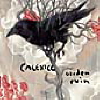 Attention all fans of weak and painfully insipid music everywhere: Calexico has exactly what you are looking for. Where this band has previously excited and enticed with magical blends of southwestern spice and powerful American rock, they now wallow in some dismal land of monotonous acoustic balladry. It's sort of like listening to late Bruce Springsteen after falling in love with Nebraska, only more disappointing because Calexico has written way better songs than that guy.
Attention all fans of weak and painfully insipid music everywhere: Calexico has exactly what you are looking for. Where this band has previously excited and enticed with magical blends of southwestern spice and powerful American rock, they now wallow in some dismal land of monotonous acoustic balladry. It's sort of like listening to late Bruce Springsteen after falling in love with Nebraska, only more disappointing because Calexico has written way better songs than that guy.
Quarterstick
Feast of Wire made me dance, daydream, and flat out rock when it was first released. There was a misty, unspeakable quality to the whole album that made it shimmer, but there was enough force and drive in the music to give it a sharp edge. It was fun to listen to and catchy to boot, but there was enough fire in the songwriting to make it stand out, to make it feel individual and unique. Garden Ruin, on the other hand, sounds flat. Its visual equivalent is a large, flat mass of land filled with nothing but sand. Gone are all of the flourishes that made previous Calexico records feel special; it sounds as though the band took everything that made them great and filed it down to be perfect for radio replay. Normally an average album from a great band is still worth paying attention to, but this is an especially bad drop in quality for Calexico.
To be more clear, every last song on this album is catchy in some way or another, but after just a few minutes I lose interest in the music and start to wonder what else I have that I could put on besides this. It took me a few tries to get through the entire album, not because I didn't like any of the melodies, but because I could literally predict when the vocal harmonies were going to appear and when trumpets or slide guitar would make an entrance. At points I thought Mark Knopfler was going to appear on the album. The smooth guitars and utterly soft texture Garden Ruin carries with it reminds me of why Dire Straits' last album failed so horribly. This isn't exciting rock music, this is horribly bland background music meant for people to ignore. Remember watching High Fidelity and thinking that the Belle and Sebastian reference was horribly appropriate? That's just how I feel about this album. It's ambient music without any of the attractiveness that Eno and others managed to pull out of the genre. It's music to play for your parents when they're worried about the kind of music you're getting into. It's a distraction and place holder for other bands that sound dangerous and that are palpably horned. Nothing about Garden Ruin is edgy, it's simply a record to pass the time with, while nothing more noticeable is happening.
When a band flattens out like this, I always fear for them, but in reality I'm probably fearing more for myself. I loved Feast of Wire, I even enjoyed their split with Iron and Wine. With Garden Ruin, however, Calexico are getting sleepy and putting people to sleep because of it. I like quiet songs and I like romantic songs, maybe even a few sentimental tunes here and there. The lack of vitality on this record doesn't stem from its subject matter, but from the music itself. A song like "Deep Down" doesn't inspire some feeling of deep emotional attachment in me nor does it drive me to feel particularly alone or angry, fighting internally in the way that the song attempts to. In place of genuine emotions, a sense of plastic and commercialized feeling emerges and completely ruins the song, turning a protest into a meaningless and especially mundane exercise. It reminds me of how easy it can be to make a band ready for radio. All it takes is the right production and a desire to please everyone simultaneously. It's an impossible goal to please everyone and be unique, the best music is always intensely personal and full of all the quirks that songwriters bring to their craft. Calexico, on this record, are trying to sound far too pleasing and have only succeeded in making a boring album as a result.
samples:
Read More
- Administrator
- Albums and Singles
 Hot on the heels of their excellent album Play, Larsen have released another superb release. Expanding their line up with some fitting guests, they now sound even surer of themselves. I can’t stop listening to this album; it is the best release from them yet. Larsen seem to have gained a confidence that was lacking before that has led to them composing some of the best music of recent years.
Hot on the heels of their excellent album Play, Larsen have released another superb release. Expanding their line up with some fitting guests, they now sound even surer of themselves. I can’t stop listening to this album; it is the best release from them yet. Larsen seem to have gained a confidence that was lacking before that has led to them composing some of the best music of recent years.Seies is a further improvement and a logical step forwardfrom the previous album, “The Snow” sounds like the bridge between thetwo releases. The guests on the album all fit perfectly withLarsen (or maybe Larsen are just good at accommodating guests intotheir sound). Julia Kent’s cello feels like it has always been a partof the instrumentation. It pairs off with Dellaplana’s accordionbeautifully. Equally beautiful are Jarboe’s vocals. Jarboe can put hervoice to anything and make it golden but with such talent as Larsen’s,the combination is untouchable. “Rever” (which has the same name as thealbum Larsen did with Michael Gira at the helm) evokes feelings ofbeing at sea: Kent’s cello being the warm breeze; the glockenspiel isthe splashes of salt water and Jarboe’s voice is the feeling of freedomof the open waters. In fact, most of the tracks on Seies have a nautical edge to them. This feeling makes me think of Seies as a good precursor to Nurse With Wound’s Salt Marie Celeste: the bright, sunny day in a blue ocean before the terrible night on a black sea.
The third and final collaborator is Lustmord, whose contribution doesn’t sit as well in the context of the album. He adds his usual ambience to “Marzia” but when I listened to it as part of the album, it stuck out like a sore thumb (especially after the wonderful “Haula” that precedes it). However, when I listened to it alone, away from the rest of the album, it worked a lot better. "Marzia" would have been better as an EP on its own or else maybe a track or two was needed to allow a better flow on the album. In any case, this is more of a personal quibble rather than the music actually being bad.
Seies is, as I said before, the best thing Larsen have done so far. I’m always reluctant to say that about a new release as my opinion could change in a week or two but I’m making an exception in this case. I hope they continue to impress and evolve. Judging from their recent appearance on The Eye, my hopes aren’t likely to be dashed soon. Especially if the next release features Baby Dee (a subtle hint if you are reading this, Larsen).
samples:
Read More
- Administrator
- Albums and Singles
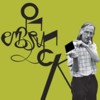 New York's reclusive No Neck Blues Band joins Munich's veterans Embryofor their first recorded collaboration. The combined group functions asa well-integrated whole, stringing together an album that couldotherwise have been a mere collection of disparate elements, despite the improvisational approach, arrayof instruments, and both Western and non-Western rhythms andtextures.
New York's reclusive No Neck Blues Band joins Munich's veterans Embryofor their first recorded collaboration. The combined group functions asa well-integrated whole, stringing together an album that couldotherwise have been a mere collection of disparate elements, despite the improvisational approach, arrayof instruments, and both Western and non-Western rhythms andtextures.Staubgold
Theopener, "Wieder das erste Mal," sets a tone for the rest ofthe album. Clanging, serpentine rhythms and wordless throat singinginvoke an otherworldly realm while strings, flutes, xylophones, andmany other instruments come in and out of the mix. Nothing sounds outof place and the pace remains forceful without becoming languid despiteits running length of nine and a half minutes. "Die Farbe aus dem All"also jumps from the beginning, the bass and drums propelling the tempoforward while horns chase after them like sirens and metallic scrapeshover alongside the beat. Not until escalating echoed voices becomegoat-like do things die down, with a loud hum bringing up the rear.Songs like "Five Grams of the Widow" and "Zweiter Sommer" provide avalued contrast to some of the heavier tracks. The former is fairlyshort and airy, with horns making effective low-key statements in aflirtation with jazz. The latter starts with delicately plucked stringsbefore hand drums give birth to a shaggy rhythm that becomes a willowysummer anthem.
A couple of the songs sound somewhat incomplete, buteven those hit some fine moments that might otherwise be lost trying toperfect an arrangement. The album never feels as if the group isover-reaching, but rather they do a good job of maximizing each other'sstrengths. This, combined with their sense of dynamics, makes for apowerful debut that will hopefully entice them into futurecollaborations.
samples:
Read More
- Administrator
- Albums and Singles
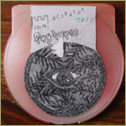 Betrayor sees Wolf Eyes members continuing to infect the CD-R marketvia another pseudonymous release, created by Nate Young. This, thefirst ever CD-R release on the infamous Fag Tapes cassette label, isapparently based on real instrumentation abuse rather thandeconstructing pure tones into scum sounds.
Betrayor sees Wolf Eyes members continuing to infect the CD-R marketvia another pseudonymous release, created by Nate Young. This, thefirst ever CD-R release on the infamous Fag Tapes cassette label, isapparently based on real instrumentation abuse rather thandeconstructing pure tones into scum sounds.Fag Tapes
Forjust under 30 minutes Young deconstructs and brutalizes a series ofbrief piano melodies in the sonically ideal setting of some extremelyresonant workshop/torture chamber. Despite being only programmed as onetrack, Betrayor is broken up into several different sections ofincreasing violence. The main thematic pieces here are three to fivenote melodies which sound like cracked church bells slowed down to anarcotic piano peal. Phasing in and out of the foreground areglistening treble feedback whines which appear to have lost their waymoving from damp wall to damp wall. These disturbing echoes squeal likethe recently oiled rusty iron wheels of some terrible contraption andonly heap more dark onto the track.
These wrecked musicalmissives carry a kind of early Birthday Party / Bad Seeds tension intheir very deeply dislocated blues. Almost every single sound here,from the radio static whines through to the punched holes in the pianowood, has a coiling and uncoiling nastiness to it. The whiplash blastsof percussion and mechanical stallings are forced against singlethumpings of huge sides of meat to create unstable, arrhythmicscaffolding.
It’s left to reverberating plastic smacks togive it one last attempt to unsuccessfully build something more stablearound the chilly water drip sounds. A slithering snuffling aura flitsaround increasingly heavy blows to the piano as the musicality isthrown aside in favour of brutality. The instrument is taken apartpiece by piece, and the surgery sounds systematic and merciless. As itprogresses it becomes steadily more chaotic and noisy, giving way todigital rips like power tools overloading in a bucket of water.
Read More
- Administrator
- Albums and Singles
 Helping Hand is a tasteful album, Biyikli and Charrier have put enough into each track to make them exciting but don’t ever become overwhelming or overworked. They pace themselves and the album feels perfectly planned out to keep leading me on, letting me rest when I need to before grabbing me by the hand again. Despite this feeling of the album being laid out to keep the listener listening, the music still sounds entirely spontaneous and full of life.
Helping Hand is a tasteful album, Biyikli and Charrier have put enough into each track to make them exciting but don’t ever become overwhelming or overworked. They pace themselves and the album feels perfectly planned out to keep leading me on, letting me rest when I need to before grabbing me by the hand again. Despite this feeling of the album being laid out to keep the listener listening, the music still sounds entirely spontaneous and full of life.
Sub Rosa
The production on the album is a treat for the ears. Sounds dance around in space, especially on the title track where the melody sounds like it is coming from the speakers but the noisy percussion and occasional strums of an acoustic guitar sound like they are being played live around my head. Details like this are the things that make an album go from good to special for me. Artists that don’t put the effort into the production are normally the ones that the phrase “They are much better live” was made for. That being said, the best production in the world can’t help a poor performance but, as evidenced in this case, a decent production is the icing on the cake that is a good performance.
Multiple listening sessions are a must for Helping Hand. The amount of fine detail in the music is immense, tracks like “Strange Feeling” and “Separation” are like a pair of fine meals as small subtleties add up to a wonderful whole. Blending melodies with noise is nothing new but the combinations here are worth hearing. Many of the tracks utilise piano, guitars and Fender Rhodes for the main scaffolding of the song before seemingly random sounds like doors being shut, sporadic percussion, rustling of paper and snippets of conversation are introduced into the mix. Granted this probably sounds like half the albums reviewed on Brainwashed but there is a spark of creativity in Man’s music that piqued my interest.
Helping Hand finishes as strong as it starts with a trio of songs that on their own would have made me happy, let alone with the rest of the album. The most interesting of these is the seemingly straightforward “Revenir” which begins with a slow but determined bassline and a simple drum loop. Before long there are drones, drips and decidedly odd noises supplementing the music. As with the rest of the album, it is similar to a slew of other artists but has something about it that raises it from the pack.
Man have really impressed me which is a shame because now I’m going to have to spend money on picking up their other releases. I’m hoping that they live up to my expectations and that Helping Hand isn’t a fluke work of brilliance.
samples:
Read More
- Administrator
- Albums and Singles
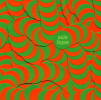 Raving techno beat silliness still reigns supreme in the hearts of some, and thanks to Marijke Jorritsma and Gregory Zifcak it isn't hard to see why. With the help of some old synthesizers and other modified equipment, these two are breathing life back into the acid and ecstasy fuelled heart of dance music.
Raving techno beat silliness still reigns supreme in the hearts of some, and thanks to Marijke Jorritsma and Gregory Zifcak it isn't hard to see why. With the help of some old synthesizers and other modified equipment, these two are breathing life back into the acid and ecstasy fuelled heart of dance music.
Tigerbeat6
With only two releases on Tigerbeat6 and one on Community Library; the duo of Jorritsma and Zifcak don't have an expansive discography and that's good news. After hearing Sticky Tapes it's likely that a buying frenzy will well up in almost anyone's blood simply because their music is so much fun. Released in the middle of 2005, I didn't see this album get much press, either because I'm blind or because at the time Sticky Tapes sounded dangerously like kitsch. Contained inside is all the wiggling, beeping, flat out acidic techno music I could ever ask for. From the get go Eats Tapes lays down the four-on-the-floor "boom boom" beat and begin layering bits of melody and scattered percussion all over it. There's nothing progressive or earth-shattering about it, but it is a ton of fun. By eschewing all the unnecessary vocal samples and drug-related bullshit that gets tied so intimately to techno, Jorritsma and Zifcak get rid of all the annoying facets that (rightfully) gave techno such a bad name near the end of its popular life. All that's left are instrumental tracks that sound like the out of control and hallucinating child of Devo and Michael Winslow from Police Academy and Spaceballs (you know, the guy that made all the sound effects with his mouth?).
With shifting melodies and crazy percussive samples galore, the only thing I can complain about is that after nine tracks of the same bass drum part (boom boom boom boom), I wish that the band would have focused on their drum parts as much as their synth parts. There's enough happening at one time for me to forget about the incessant thump of that bass drum, but the album doesn't stand up to repeat listens because of it. Some variety in the groove department wouldn't have hurt at all, but with that thought aside, it's hard not to have fun when Sticky Buttons is spinning.
The overall mood of the album is bouncy, fun, and outright goofy. The band's best quality may well be their lack of pretentiousness. There's nothing here but rapid-fire synthetics and mechanoid strobe lights; more than enough to have a good time to. Kid 606's knob-twiddling hand makes an appearance on three tracks, though his love for skipping percussion sadly doesn't enter the picture. Eats Tapes are sure to release more music, their style is too infectious not to catch on. In the mean time, try tracking down everything else in their discography. I get the feeling that a lot of it will be hard to find, soon.
samples:
Read More
- Administrator
- Albums and Singles
 I listened to enough Frank Zappa and "experimental" music in the past to know that I typically hate bands that just talk or moan over their music. Even Captain Beefheart bugs me on that level, sometimes. Excepter, however, prove to be an exception to that rule. Paired down to a four piece, the group's sensitivity towards atmosphere and rhythmic dynamism prove to be more than winning qualities on Sunbomber and it was all recorded in just one hour.
I listened to enough Frank Zappa and "experimental" music in the past to know that I typically hate bands that just talk or moan over their music. Even Captain Beefheart bugs me on that level, sometimes. Excepter, however, prove to be an exception to that rule. Paired down to a four piece, the group's sensitivity towards atmosphere and rhythmic dynamism prove to be more than winning qualities on Sunbomber and it was all recorded in just one hour.5RC
From that hour together, Excepter chose to include just 29 minutes of music on this EP. Over five tracks John Fell Ryan, Dan Hougland, Nathan Corbin, and Jon Nicholson simply play off one another, weaving together what might be tin whistles, synthesizers, tape machines, drums, and all manner of strange squeaks. The vocals, however, I could do without. Whenever someone is "singing" I get the feeling that there was less than sufficient thought put into how it would sound coupled with the music. Considering Excepter has a knack for improvisatory performance, it isn't surprising that they chose to keep the vocals the way they are. For the most part it's all droning, chanting moans, mostly unintelligible and inconsequential over the pulse of the music. What matters is how Excepter blend all of their sounds together on the spot, choosing to weave what instruments they have together instead of highlighting one performer's ability or one instrument's appeal.
The pulse that surges irregularly throughout the course of Sunbomber is what keeps it alive. Excepter masterfully merge their ideas together, creating a blend of ideas and sounds that magically coalesce into one gyrating chorus of noise and melody. It's no wonder that the band's music has been called mystical or ritualistic, they have a tendency to focus in on a theme or a mood and then circle around it, bring to life, as if by some alchemical formula too complex to be written down or understood by modernity. Every track starts in the womb of some strange mutant and ends up a galactic swarm of cosmic dust and alien paranoia. The band refuses to give into the computer temptation and keeps everything live, manipulating tapes and beats on the spot instead of orchestrating their work ahead of time. One result of this choice is the band's unpredictability, but the other, more interesting result is the band's utter strangeness. I'm equally tempted to dance and run naked beneath a full moon because of this disc. I imagine if someone made a film about Satanic ritual, the music would make the perfect soundtrack, but I also imagine that if someone made a film about alien abductions, this album would only heighten the sense of otherness already associated with that topic.
Excepter's music sounds miraculous in short format. The EP was practically made for a band like this. Its brevity showcases the band's talent well without allowing them to fly off into territory too abstract and gravity-less to be enjoyable. With the final song being the longest, at just under 10 minutes, there's more than enough room to get cozy with Excepter. Their long-form jams are fun, but sound best when coupled with shorter material like the stuff found on Sunbomber. This may be Excepter at their finest, the gateway drug into their rather labyrinthine sound.
samples:
Read More

